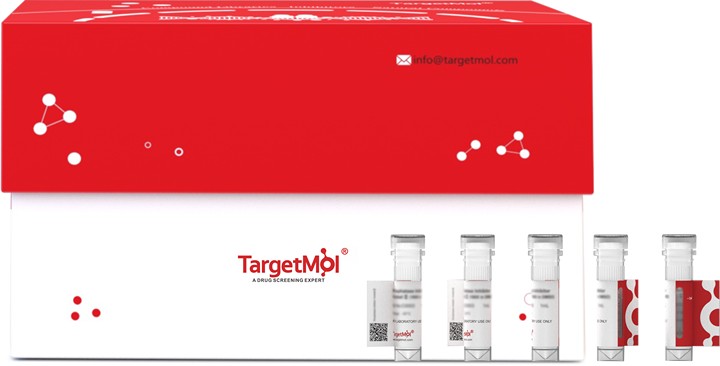 您的购物车当前为空
您的购物车当前为空
MIA Protein, Human, Recombinant (His)
一键复制产品信息Melanoma Inhibitory Activity Protein (MIA) is an autocrine growth regulatory protein secreted from chondrocytes and malignant melanoma cells, which was the first discovered member of a family of secreted cytokines termed the MIA/OTOR family. The four known members of this family: MIA, MIA2, OTOR and TANGO each contain a Src homology-3 (SH3)-like domain. MIA acts as a potent tumor cell growth inhibitor for malignant melanoma cells and some other neuroectodermal tumors, including gliomas, in an autocrine fashion and promotes melanoma metastasis by binding competitively to fibronectin and laminin in a manner that results in melanoma cell detachment from the extracellular matrix in vivo. The protein MIA has been shown to represent a very sensitive and specific serum marker for systemic malignant melanoma that might be useful for staging of primary melanomas, detection of progression from localized to metastatic disease during follow-up, and monitoring therapy of advanced melanomas. Elevated levels of MIA may represent a clinically useful marker for diagnosis of melanoma metastasis as well as a potential marker for rheumatoid arthritis.

MIA Protein, Human, Recombinant (His)
一键复制产品信息| 规格 | 价格 | 库存 | 数量 |
|---|---|---|---|
| 5 μg | ¥ 492 | 6-8日内发货 | |
| 10 μg | ¥ 820 | 6-8日内发货 | |
| 20 μg | ¥ 1,290 | 5日内发货 | |
| 50 μg | ¥ 2,480 | 5日内发货 | |
| 100 μg | ¥ 3,980 | 5日内发货 | |
| 200 μg | ¥ 6,420 | 5日内发货 | |
| 500 μg | ¥ 12,100 | 5日内发货 | |
| 1 mg | ¥ 17,300 | 5日内发货 |
产品信息
| 生物活性 | Activity has not been tested. It is theoretically active, but we cannot guarantee it. If you require protein activity, we recommend choosing the eukaryotic expression version first. |
| 产品描述 | Melanoma Inhibitory Activity Protein (MIA) is an autocrine growth regulatory protein secreted from chondrocytes and malignant melanoma cells, which was the first discovered member of a family of secreted cytokines termed the MIA/OTOR family. The four known members of this family: MIA, MIA2, OTOR and TANGO each contain a Src homology-3 (SH3)-like domain. MIA acts as a potent tumor cell growth inhibitor for malignant melanoma cells and some other neuroectodermal tumors, including gliomas, in an autocrine fashion and promotes melanoma metastasis by binding competitively to fibronectin and laminin in a manner that results in melanoma cell detachment from the extracellular matrix in vivo. The protein MIA has been shown to represent a very sensitive and specific serum marker for systemic malignant melanoma that might be useful for staging of primary melanomas, detection of progression from localized to metastatic disease during follow-up, and monitoring therapy of advanced melanomas. Elevated levels of MIA may represent a clinically useful marker for diagnosis of melanoma metastasis as well as a potential marker for rheumatoid arthritis. |
| 种属 | Human |
| 表达系统 | E. coli |
| 标签 | C-6xHis |
| 蛋白编号 | Q16674 |
| 别名 | MIA,Melanoma-Derived Growth Regulatory Protein,Melanoma Inhibitory Activity Protein |
| 氨基酸序列 | Gly25-Gln131 |
| 蛋白构建 | Gly25-Gln131 |
| 蛋白纯度 | Greater than 95% as determined by reducing SDS-PAGE. (QC verified) |
| 分子量 | 14 KDa (reducing condition) |
| 内毒素 | < 0.1 ng/µg (1 EU/µg) as determined by LAL test. |
| 缓冲液 | Lyophilized from a solution filtered through a 0.22 μm filter, containing PBS, pH 7.4. |
| 复溶方法 | Reconstitute the lyophilized protein in distilled water. The product concentration should not be less than 100 μg/ml. Before opening, centrifuge the tube to collect powder at the bottom. After adding the reconstitution buffer, avoid vortexing or pipetting for mixing. |
| 存储 | Lyophilized powders can be stably stored for over 12 months, while liquid products can be stored for 6-12 months at -80°C. For reconstituted protein solutions, the solution can be stored at -20°C to -80°C for at least 3 months. Please avoid multiple freeze-thaw cycles and store products in aliquots. |
| 运输方式 | In general, Lyophilized powders are shipping with blue ice. Solutions are shipping with dry ice. |
| 研究背景 | Melanoma Inhibitory Activity Protein (MIA) is an autocrine growth regulatory protein secreted from chondrocytes and malignant melanoma cells, which was the first discovered member of a family of secreted cytokines termed the MIA/OTOR family. The four known members of this family: MIA, MIA2, OTOR and TANGO each contain a Src homology-3 (SH3)-like domain. MIA acts as a potent tumor cell growth inhibitor for malignant melanoma cells and some other neuroectodermal tumors, including gliomas, in an autocrine fashion and promotes melanoma metastasis by binding competitively to fibronectin and laminin in a manner that results in melanoma cell detachment from the extracellular matrix in vivo. The protein MIA has been shown to represent a very sensitive and specific serum marker for systemic malignant melanoma that might be useful for staging of primary melanomas, detection of progression from localized to metastatic disease during follow-up, and monitoring therapy of advanced melanomas. Elevated levels of MIA may represent a clinically useful marker for diagnosis of melanoma metastasis as well as a potential marker for rheumatoid arthritis. |





 |
|